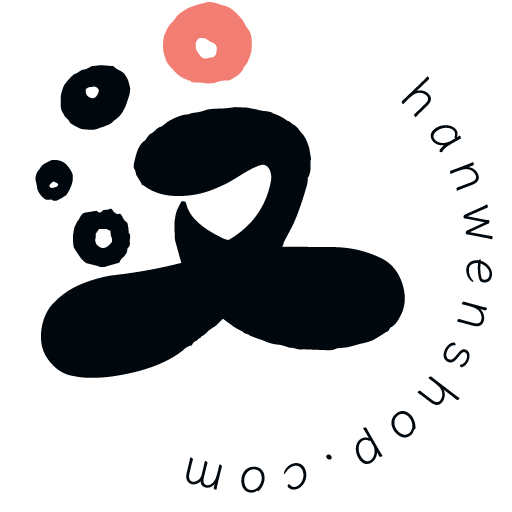Hanfu, also known as Han clothing and hats, is the traditional costume of the Han Chinese nationality. It was formed for more than four thousand years from the accession of the Yellow Emperor (around 2698 BC) to the end of the Ming Dynasty (mid-17th century AD), centering on Chinese etiquette culture.
Hanfu has a long history and many styles. Each dynasty has its own characteristics, but the main features remain unchanged. It is famous for its unique clothing structures such as "cross collar and straight lapel", "wide robe sleeves", "hidden lace-up buckle", etc. It records the evolution of Hanfu from the Qin and Han dynasties to the end of the Ming Dynasty.
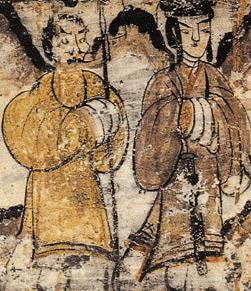
202 BC BC – 220 AD AD
Han Dynasty 汉
Although the origins of Hanfu can be traced back to the Shang Dynasty (1600 BC – 1045 BC), the Han Dynasty is widely considered to be the historical beginning of Han clothing.
Characterized by long, cross-necked robes tied at the waist called Shēnyī 深衣. The shēnyī came in two main forms:
Qūjū 曲裾 - curved hem dress
Zhíjū 直裾 - straight hem dress
Men and women could wear these dresses interchangeably as they were unisex.
Towards the end of the Han dynasty, the shēnyī were replaced by outfits with a crossed collar and high-waisted skirt called Rúqún 襦裙.
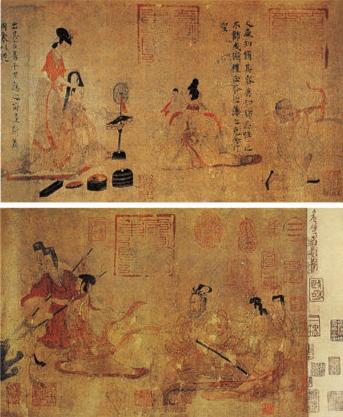
220 AD - 420 AD
Wei Jin Dynasty 魏晋
The Wei and Jin dynasties existed from the early 3rd century AD to the early 5th century AD. Despite political turmoil, the Wei Jin period witnessed a boom in culture, arts, literature, and fashion!
Clothing from these eras was influenced by Buddhist murals of gods and was called Guīyī 袿衣, or Zájū Chuíshāo Fú 杂裾垂髾服, which directly translates to "garment with dovetail hems and flying ribbons." Noblewomen wore long ribbons and triangular skirts that imitated bird feathers.
For commoners, the rúqún 襦裙 was still the most popular style and came in many patterns and colors. Often consisting of a wide-bordered shirt called Yāolán Rú 腰襕襦 and long striped skirts called Pò Qún 破裙, or "broken skirts." Referring to the many strips of fabric used to make the skirt and the striped pattern.
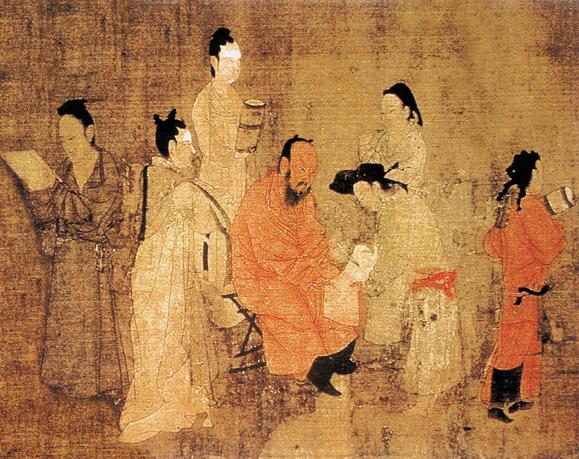
420 AD - 589 AD
Northern and Southern Dynasties 南北朝
The Northern and Southern Dynasties are best known for their iconic female warrior Huā Mùlán 花木兰. Despite political fragmentation and continuous wars, the Northern and Southern Dynasties witnessed significant cultural exchanges.
Buddhist monks, scholars and artisans traveled between regions, spreading ideas, knowledge and artistic techniques. This gave rise to a trend known as the “style of the immortals”.
Women painted their foreheads yellow to imitate golden Buddhist statues, a makeup trend known as É'huáng 额黄. To achieve the immortal look, women tied the skirts of the rúqún 襦裙 higher, directly under the chest. The sleeves were lengthened considerably and the collars were pulled outward, revealing the undergarments. Undergarments were the star of both northern and southern fashions and came in round necks, boat necks, turtlenecks, and vests.
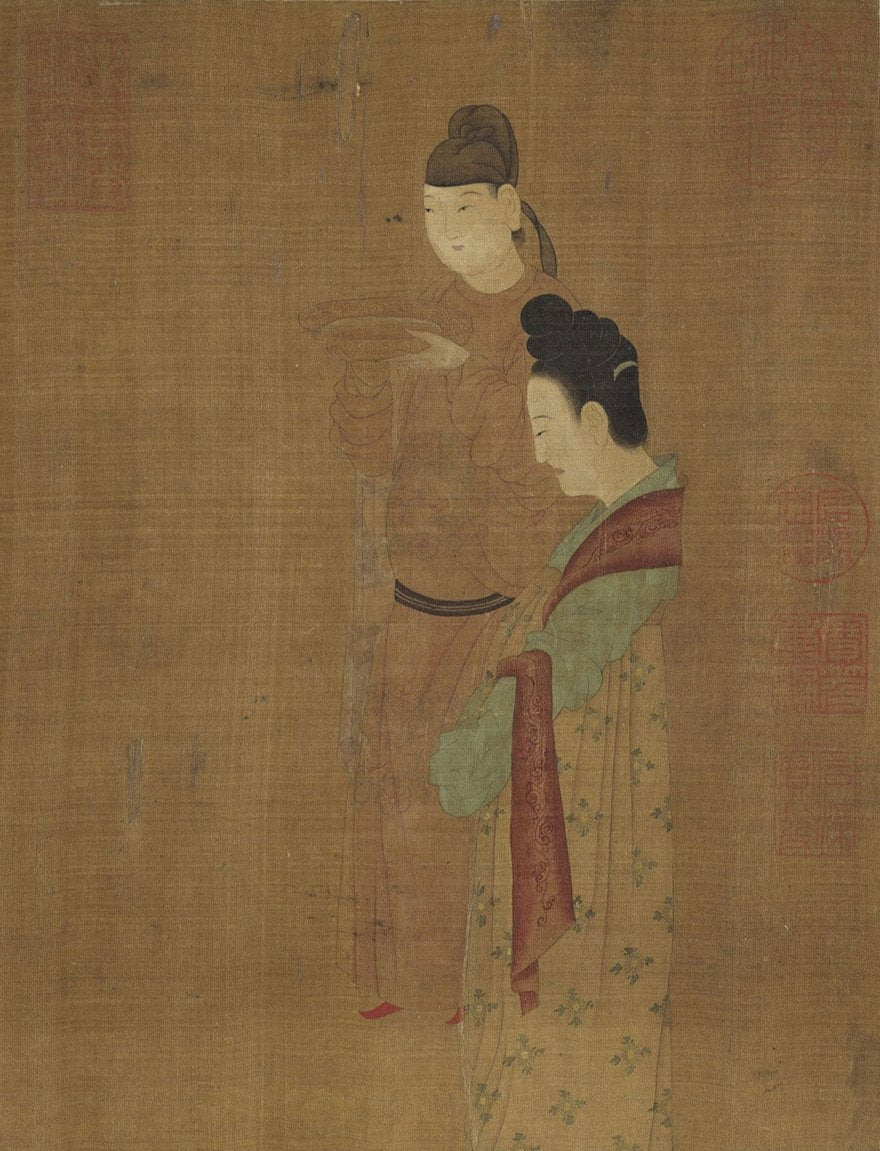
618 AD - 907 AD
Tang Dynasty 唐
The Tang Dynasty, known as the Golden Age of China. The Tang Dynasty saw its first female emperor, Wǔ Zétiān 武则天, ascend to the throne, allowing women to experience a rise in power and influence. Fashion during the Tang reflected women's empowerment and was often bright, colorful, exaggerated, and ethereal.
In the early Tang period, the slimmer pòqún 破裙 paired with short tops called bànbì 半臂 were a common attire. From the late Tang period to the late Tang period, the Qíxiōng Rúqún 齐胸襦裙, known for its high-bust silhouette, took center stage and is considered the trademark of hanfu attire. Paired with a long decorative shawl called Pībó 披帛, the Tang hanfu truly creates a goddess-like look.

960 AD - 1279 AD
Song Dynasty 宋
The Song Dynasty saw the rise of Neo-Confucianism as the dominant ideology, leading to a decline in the position of women in society and a shift from flashy fashions to a more sober and feminine aesthetic.
Typically multi-layered, Song dynasty hanfu followed the same Rúqún 襦裙 formula, but characteristically featured delicate brocade borders, floral embroidery, and beaded details.
Mǒxiōng 抹胸, a tube top-shaped garment.
Duǎnshān 短衫, a top with narrow sleeves and a crossed collar.
A long outer jacket called Bèizi 褙子, often decorated with floral brocade borders.
A wide-legged Song trouser called Sòngkù 宋裤.
Either under a short skirt called Wéichang 围裳
Either under a long pleated skirt called BaiDieQun 百迭裙.
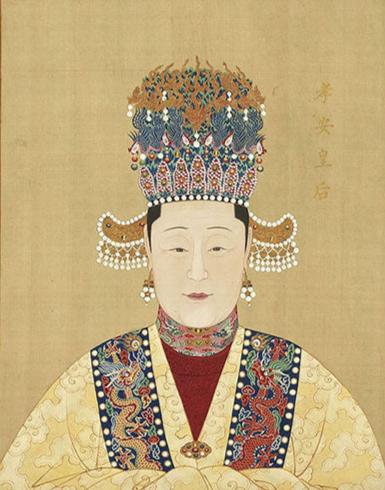
1368 AD - 1644 AD
Ming Dynasty 明
The Ming Dynasty is one of the most culturally dynamic and politically stable periods in Chinese history. The Ming Dynasty advanced its textile and weaving production, raising the standard of clothing for all social classes.
The result is a regal and conservative style of hanfu with long sleeves, high necklines, pleated ankle-length skirts, elaborate woven fabrics and heavy brocades.
A common outfit during the Ming Dynasty was called Ǎoqún 袄裙, a shirt and skirt formula similar to Rúqún 襦裙.
Ǎo 袄 refers to an untucked lined top. Consisting of:
large curved sleeves called pípá xiù 琵琶袖
arrow-shaped sleeves called jiàn xiù 箭袖
Women wore either a plain pleated long skirt called Mǎnzhé Qún 滿摺裙 or the iconic Ming Dynasty skirt: Mǎmiàn Qún 马面裙. Translated as “horse head skirt,” the Mǎmiàn 马面 was a long skirt constructed with a large panel on the front and back, and many pleats on the sides. Of course, it has nothing to do with horses! Its name comes from its similar construction to ancient war forts also called Mǎmiàn 马面.
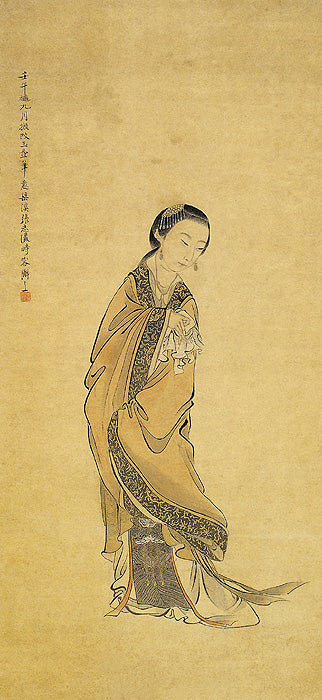
1644 AD - 1912 AD
Qing Dynasty 清
The Qing Dynasty was the last imperial dynasty of China. Under the Tìfā Yìfú 剃发易服, an imperial edict banning traditional Han clothing, Chinese fashion would evolve into the exquisite garments most recognized around the world.
Women's clothing differed depending on whether they were Manchu or Han.
Manchu women wore Qízhuāng 旗裝, or "Manchu clothes." These were typically long, one-piece robes called Chènyī 衬衣 with slits on the sides for ease of movement (pictured). They were paired year-round with a white scarf-like collar called Lónghuá 龍華. Imperial consorts wore Chǎng Yī 氅衣, a formal version of the Chenyi.
Han women were still known as Hànfú 汉服, but these garments are now known as Qīng Hàn Nǚzhuāng 清汉女装 or "Han Qing women's clothing". Han Chinese women retained their Ming Dynasty two-piece suits of upper and lower garments, including the Ǎoqún 袄裙 and the Rúqún 襦裙. Over time, Han Chinese women adopted elements of Manchu fashion. Han skirts, such as the mǎmiàn qún 马面裙, remained popular.

1912 AD - 1949 AD
Republic of China
During the Republic of China, the country experienced significant cultural and social changes, including increased interaction with Western countries.
Originally the Qípáo 旗袍, which was originally the Chènyī 衬衣 of Manchu women, has become the quintessential piece of clothing for today's Chinese. Directly translating to "Manchurian dress", the qípáo, also known as cheongsam.
Initially loyal to the loose-fitting chenyi, Western influences of shorter dresses emerged in the 1920s. The width of the cheongsam became slimmer. The iconic silhouette of the Republican-era Chinese qipao features the classic high collar and Chinese knot buttons, but with a comfortable loose waist and modest side slits.
Over time, under continued Western influence, the qipao became almost like a second skin, the iconic dress we know today.
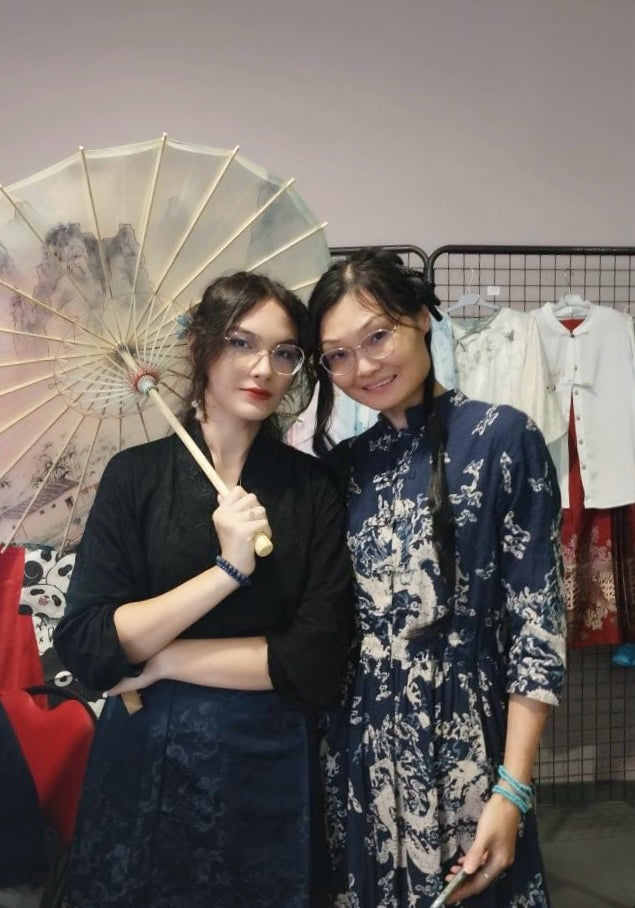
Modern Hanfu
Modern Hanfu 汉元素 is characterized by a revival of interest in traditional Han Chinese and is transformed into a fusion of tradition and innovation, blending ancient aesthetics with modern fashion trends and techniques. It is popular among Hanfu enthusiasts who want to add a bit of Han element to their everyday outfits!
Designers and enthusiasts experiment with different fabrics, colors, patterns and silhouettes to create unique and elegant Hanfu-inspired clothing for everyday wear, special occasions and cultural events.
